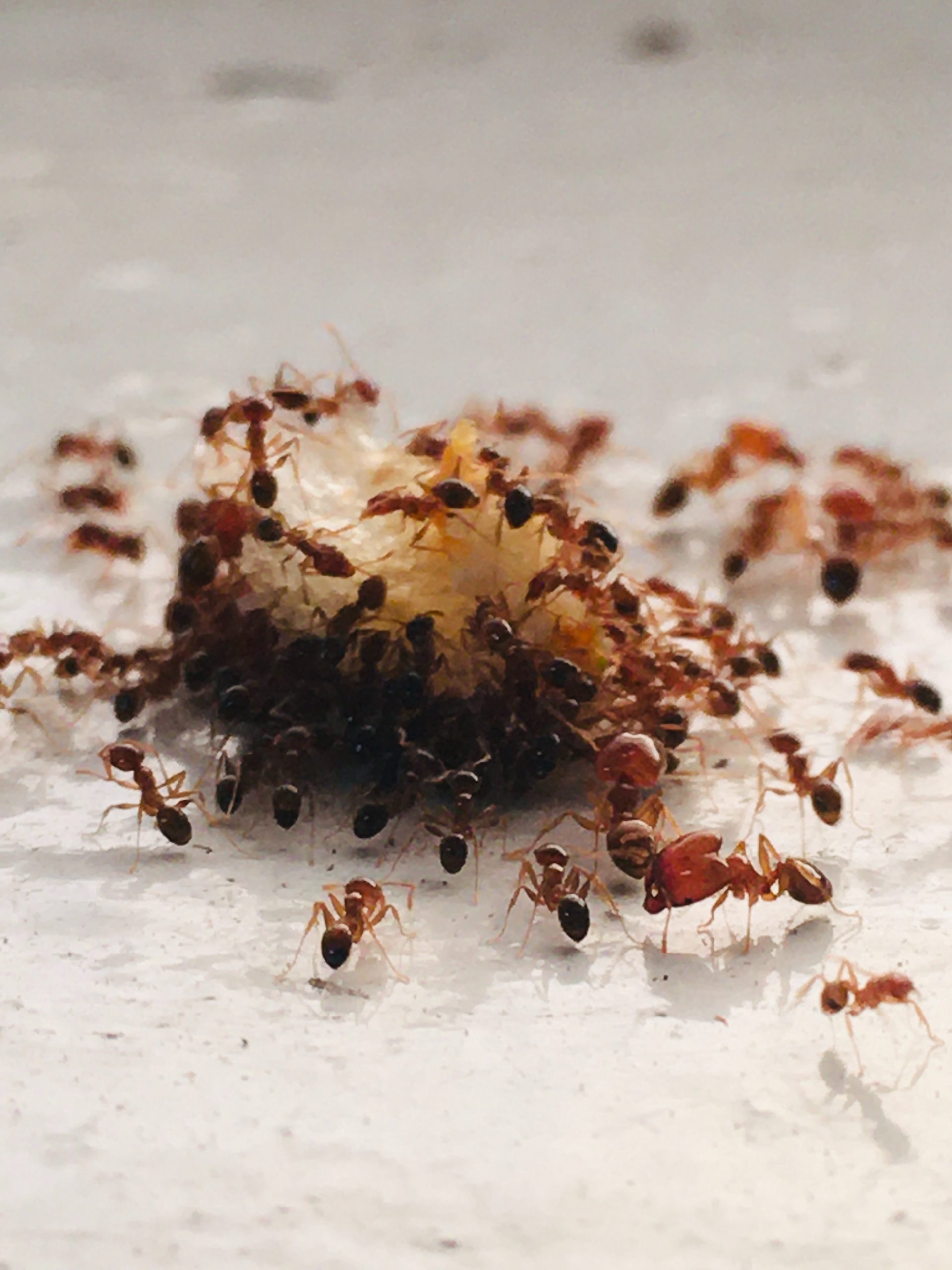

None of us like ants in our homes and businesses. During the warmer months, though, infestations seem almost impossible to avoid, and even harder to get rid of. It’s almost enough to make you dread the warmer weather! To help out, we answered some of the more common questions regarding ant infestations. We also put together a list of tips from the pros so you can rest easy knowing you won’t have any uninvited guests in your kitchen this summer.
How and why do ants enter?
Ants enter homes and businesses in search of food, water, and sometimes even a place to nest. In Southern states, invasions can happen year round, while in northern states, they usually happen during the warmer months. Ants can enter buildings through virtually any hole bigger than they are. Typically, they enter through cracks in foundations or through windows and doors that are not fully sealed around the edges. Sometimes, if tree branches are close to or touching a building, ants can use them as pathways to get to the gaps around the pipes and wires that lead into the building. Ants can also be brought inside on things like toys, outdoor furniture, and plants. The most common types of ants that invade homes and businesses are acrobat ants, carpenter ants, odorous house ants, pavement ants, pharaoh ants, and thief ants.
Where do ants infest?
The most commonly infested areas are those that contain food. Such areas include kitchens, pantries, food prep areas, and garbage cans that hold food scraps. Ants will eat pretty much anything if they need to, but they are attracted to things like sugars and starches. Fruits and vegetables that are not kept in the refrigerator are common causes of infestations, especially when they are overripe. That being said, virtually any foods that are improperly stored can lead to an infestation.
Bathrooms are also commonly infested, as they tend to be very damp. Ants looking for water will gravitate towards areas with high moisture content, and bathrooms are usually the dampest rooms. Sinks, toilets, and showers provide plenty of water for ants, especially if they are leaky.
Where do ants nest?
Outdoors
Ants are slightly less of a problem if their nest is outdoors. Most ants nest in soil, building their colonies underground. Other ants are opportunistic nesters, and they will build their colonies almost anywhere that provides cover and access to food and water. Common places include under rocks and the concrete slabs that air conditioners and generators rest on. Some ants, like carpenter ants, nest in wood. These ants nest in moist or decaying wood, so their colonies can usually be found in stumps and fallen logs. Outdoors, wood nesting ants are not usually a problem, however they can become a major problem if they build a nest in the structural wood of a home or business.
Indoors
When they build their nests indoors, ants are a little harder to deal with. Eliminating food and water sources will not get rid of the root of the problem, which is the nest. Indoor nests can typically be found in wall voids or rotting wood, but they may also be underneath floors. Ants are able to build nests and travel under carpet, hardwood, tile, and other types of flooring. Nests will most likely be in close proximity to food and water sources, like kitchens, pantries, and bathrooms. Besides these locations, ants have also been known to infest bedrooms, living rooms, basements, and air conditioning or heating units.
Tips from the Pros
There are a number of steps you can take to prevent or eliminate an ant infestation. Here are the most important ones:
Seal Gaps
The first step in prevention is eliminating any gaps through which ants can enter. Use a silicone-based caulk to seal cracks in foundations and outside walls, as well as the gaps around doors and windows. Damaged weather-stripping should be replaced and loose mortar around foundations should be repaired.
Eliminate Paths and Shelter
Tree branches and shrubbery that are close to or touching the building should be trimmed back. Ants can use them to reach gaps and holes that may be hidden or otherwise unnoticed. Mulch and debris should be kept at least a few inches away from the foundation, as they allow ants to move unseen and may lead them to entry holes. Paving stones and stacks of firewood should also be kept away from the foundation and outer walls. They provide solid protection from predators and weather, so ants will build their nests underneath them.
Create a Barrier
Crushed stone is a good material for creating a perimeter around a building. It does not allow ants to move freely and unnoticed, and it does not hold moisture like mulch does. Ant-repellant products can also be used around the foundation to prevent ants from entering.
Avoid Carrying Ants Inside
Before bringing anything inside, inspect it for ants. This includes toys, outdoor furniture, plants, laundry from a clothes line, firewood, and anything else that has spent any amount of time outside.
Limit Moisture Buildup
One of the main reasons ants enter homes and businesses is to look for water, so it is important to eliminate any unnecessary moisture. Proper drainage is crucial, so gutters and landscape drainage systems should be cleaned as often as necessary. Leaky pipes and faucets should be fixed right away and drains should be unclogged if need be. Dehumidifiers and fans are also helpful in reducing excess moisture.
Keep Areas Clean
The other main reason ants enter homes and businesses is in search of food. They will be attracted to any food source, so cleanliness is key- especially in kitchen and dining areas. Spills and crumbs should be cleaned up right away, including those around pet bowls. Garbage cans, both indoor and outdoor, should be washed out regularly. All non-refrigerated foods should be stored in airtight containers. Ants leave behind a pheromone trail so other ants can follow them to a food source. Regularly wiping down surfaces will get rid of these trails and make it more difficult for ants to follow one another to food sources. If you are having a problem with ants in your pet’s food bowl, place the bowl in the middle of a pan containing a very shallow pool of soapy water. The water creates a barrier around the bowl preventing ants from reaching it.
Use Traps
Traps and bait stations are useful in managing ant populations. Sticky traps will deal with any visible ants. Bait stations tend to be more effective, as they will kill visible ants as well as those residing in the nest. Ants will take the poisoned bait back to their colony where it will kill any ants that eat it.
Now that you know how to avoid ant infestations in your home or business, you never have to dread the warmer months again! If you still seem to have ants on your property, though, don't hesitate to contact us for effective residential pest control and commercial pest control services. Our experts are here to provide tailored solutions for your pest control needs, ensuring a pest-free environment whether you're at home or in your business. Give us a call today to get started.






